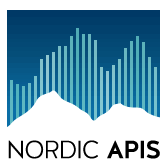 NordicAPIs kicked off a two-day conference in Stockholm last week, bringing together a number of members in the local API scene from startups and industry and pulling in speakers from around the globe. It was part of a longer series of events put on by two Swedish companies: Dopter and Twobo Technologies, an API consulting firm and Identity and Access Management consultant, respectively. Next up they have an APIs for Business topic planned for Internetdagarna, and they hope to hit cities like Copenhagen and Helsinki with smaller NordicAPIs events soon.
NordicAPIs kicked off a two-day conference in Stockholm last week, bringing together a number of members in the local API scene from startups and industry and pulling in speakers from around the globe. It was part of a longer series of events put on by two Swedish companies: Dopter and Twobo Technologies, an API consulting firm and Identity and Access Management consultant, respectively. Next up they have an APIs for Business topic planned for Internetdagarna, and they hope to hit cities like Copenhagen and Helsinki with smaller NordicAPIs events soon.
For our more casual readers, APIs basically allow a company to share its data to other developers, so that new things can be built off of it by third parties. Twitter has an API, for example, allowing developers to get access to the Twitter feed to build new Twitter apps or analytics startups, further strengthening Twitter’s position in the world. Rather than covering these general topics, the conference dug deep into the whole scene, talking about testing APIs, building apps with an API backend, and covering fun topics like REST, SOAP, Hypermedia, and HTTP Headers.
For full disclosure, we were a media partner for the event, but I can say honestly it was well put together and full of good people. I found out quickly I was a layman to the whole scene. I had a good idea of what an API was, and the wide-open potential provided by APIs, but I had no idea what challenges APIs pose for enterprise companies, nor did I know there were entire industries with hundreds of employees solving each of these ‘new’ issues.
An cool topic that was discussed in a panel discussion was APIs and the Internet of Things, which is going to be an interesting challenge as more “things” like wearable devices and dishwashers get connected to the internet. Currently there are no standard protocols, and new ones are developed constantly. Part of this reason is there’s a big gap between the maker space and industrial companies, who have different goals with how their devices should talk to others. The panel discussion somewhat ended with a good point that no matter how cool driving up to your house and the lights turning on is, that currently there’s no “killer app” for the Internet of Things, perhaps giving more time to figure out how we devices should talk to each other.
To find out how startup founders should start thinking about their APIs, I spoke to Adam DuVander, executive editor at Programmable Web; Bradford Stephens, Developer Evangelism and Platforms at Ping Identity; and Tim Anglade, Head of Developer Programs at Apigee.
On the general topic of how new, and perhaps nontechnical startup founders should think about their API strategy:
DuVander (Programmable Web): They’re probably the right people to be thinking about the API first – APIs are now more and more are a business solution rather than a technical solution. Your business model exists, and should be encased by your API.
Stephens (Ping Identity): So many companies are data driven, and should first help build an ecosystem around that data. Whether you’re building something that’s an app or service, everything in your app should talk to the API just like any other app should. That way any functionality users get, developers get.
Anglade (Apigee): It depends on the type of business you’re in. If you’re building an app what matters most is to do whatever it takes to launch your app. But whatever cycles you can spare to build a clean API you should do so to build APIs in a nice clean abstraction, rather than something you did in a very ad hoc manner. If you want to build a web version of your app, you’ll be in a very good position to transfer to that kind of model.
On the topic of “eating your own dog food” or building your product out of your own API:
Stephens: There’s a lot of advantages from eating your own dog food, you can ensure your API works. But there are other advantages, like people from the UX don’t have to build things back from the data layer. Also you’ll never be able to predict what people can do when you have your API out there.
DuVander: This helps you partner quickly, because if a company says “can you build this” then you can do it right away, so it doesn’t take two months. If it’s a legitimate partnership, then you can move quickly.
Anglade: I’m very pragmatic; I would build the minimal thing that works. I don’t think that using your own api to build your product is essential. Twitter, for example, has a massive amount of people and content. They could have the worst API in the world, but people would still use it. If you have a lot of demand you don’t need a clean api. I think the cleanest API is a good idea, and I don’t think you get there until you use it yourself.
For another take on the conference (in Swedish) check out this post on Menmo’s blog.
And as a bonus video, see how Absolut (yes, the distillery) is leveraging their API in Stockholm.




